Best time to visit Iceland: A month-by-month guide
Wondering when is the best time to visit Iceland? This blog lists the best time of year in Iceland for northern lights, whale watching, hot springs, and more.
Before traveling to an other-worldly destination like Iceland, planning is crucial. When is the best time to visit Iceland, and when is the best month? Whether you want to witness the breathtaking aurora borealis in the colder months or soak up the midnight sun in the summer, the best time to visit Iceland really depends on what kind of experience you’re looking for.
In this guide, we discuss the best time to visit Iceland based on various factors, such as various activities, different months of the year, and your interests. Consider getting an eSIM for Iceland before your trip to stay connected for maps, weather updates, and sharing your journey.
Best time to visit Iceland for the northern lights
Late September to late March
Witnessing the breathtaking aurora borealis or the Northern Lights is a once-in-a-lifetime experience. The best time to travel to Iceland to experience the cosmic light show in all its glory is from late September to late March. Long and dim winter nights, as opposed to summer months, make it ideal and highly likely to view the lights. However, seeing the lights is never guaranteed seeing the lights is never guaranteed since it is a sporadic event and depends on solar activity. Visit from late September until late March to give yourself the best chance.
Download an Aurora forecast app and monitor them once you arrive in Iceland. These forecasts measure aurora activity from zero to nine; anything three and above is ideal! To check while you’re on the move, you can get connected to local Icelandic mobile networks through one of the best Iceland eSIMs or a local Iceland SIM card.
Best time to visit the Blue Lagoon in Iceland
Late September to mid-October, or late March to mid-April
The best time to visit Iceland for the Blue Lagoon depends on what type of experience you seek. The Blue Lagoon is open year-round and easily accessible from Reykjavik or the airport. For fewer crowds and lower prices, enjoy the steamy, mineral-rich waters in the off-season — late September to mid-October or late March to mid-April.
On the other hand, if you’re looking forward to the midnight sun, long days, and good weather, June, July, and August are ideal. It’s also the best time to visit Iceland if you’re combining your trip with the Golden Circle or the South Coast. February or December are also ideal winter months to visit the Blue Lagoon in Iceland, as you might get a chance to see the northern lights from the hot spring.
Best time to visit Iceland for whale watching
Late May to August
The best time to spot whales in Iceland is during the summer months, from late May to August. This is when waters surrounding the island thrive, with breathtaking marine life and daylight hours at their peak. During the high season, you’ll have a great chance at spotting various whales, including humpbacks, blue whales, minke whales, and even killer whales. June and July are especially ideal due to good weather, calmer waters, and long days to enjoy a whale tour along the south coast or the Snæfellsnes Peninsula.
For smaller crowds, the best time of year to visit Iceland is between late August to early September. You’ll be able to enjoy excellent whale sightings with a more peaceful and less touristy atmosphere. Snæfellsnes is one of the best places to visit in Iceland and is home to winter orcas. In Reykjavik, you’ll be able to spot minke, humpbacks, and even dolphins, and in Husavik, blue whales.
Best time to visit Iceland: Month-by-month
To help you decide when to visit Iceland, here’s a month-by-month guide to what you can expect throughout the year.
While we have covered some of the main activities during specific months, Iceland has much more to offer, such as exploring ice caves, visiting black sand beaches, and glacier hiking.
| Month | Things to do | Additional information |
|---|---|---|
| January | The Þorrablót Mid-winter Festival Ice caves | January, a winter month, is perfect for exploring ice caves, catching glimpses of the Northern lights, and attending a historic Icelandic festival. At the Thorrablot festival, you can savor some authentic Icelandic foods, including hangikjot or brennivin. |
| February | The Winter Lights Festival Northern lights | Iceland in February is a great time to attend thrilling cultural events such as the Winter Lights and Food and Fun festivals. |
| March | Northern lights Cross-country skiing or snowboarding The Iceland Winter Games and Annual Beer Festival | Long and bright days in March make it perfect to engage in some winter sports; the nearest mountain is a 20-minute drive from Reykjavik. |
| April | Spot puffins and golden plovers during migration | Iceland in spring is definitely a whole other experience in itself. If you visit Iceland in April, you’ll be able to enjoy the return of several local bird species. April is also a pretty tumultuous month when it comes to weather. Make sure your Iceland packing list accounts for rain, snow, hail, and shine! |
| May | Whale watching Participate in nature excursions | Iceland in May sees the end of the winter months and the start of fun outdoor excursions. Tour through the lava cakes, spend a bright day whale watching, or snorkel and scuba dive in Iceland’s pristine waters. |
| June | Experience the midnight sun The afnarfjörður Viking Festival | Although summer in Iceland brings higher prices and busier attractions, you’ll still get to experience various cultural, music, and environmental festivals. |
| July | The Braðslan Music Festival Indulge in nature photography | July is the busiest tourist month of the year and also the greenest. During this month, you can explore Iceland’s vibrant scenery. |
| August | Reykjavik Pride, Reykjavik Culture Night, National Festival, Verslunarmannahelgi, Þjóðhátíð | Visiting Iceland in August means enjoying plenty of events and attractions and the country’s fully accessible wilderness. Explore Iceland’s rugged terrains with glaciers, volcanoes, and waterfalls. |
| September | Best for visiting Iceland during the off-season | September is the beginning of the off-season as many tourists begin their way home. With milder weather and fewer crowds, you might find this a perfect time to enjoy some popular attractions. |
| October | Berry picking Northern Lights | The fall season begins in October, and it’s the perfect time to go berry picking or see the Northern Lights away from city areas. |
| November | Hot springs and ice caves Northern lights | Iceland in November is a great time to experience cozy vibes in hot springs and the surrounding white-blanketed scenery. It is also the perfect time to visit ice caves and glowing blue glaciers. |
| December | New Year’s Eve in Iceland and frozen waterfalls Christmas markets and villages Glacier exploration | December is peak winter in Iceland and one of the coldest and windiest months. But it’s also the perfect time to spot the northern lights and enjoy local Christmas festivities. |
The worst time to visit Iceland
There is no universally agreed-upon worst time to visit Iceland, as your trip will largely depend on your preferences and interest in specific activities.
For example, if you’re looking to avoid the cold, explore many of Iceland’s attractions, and have full access to its wilderness, visiting during the summer, spring, or fall months would be ideal. Avoid December, January, and February.
Conversely, if witnessing the magnificent northern lights and enjoying Iceland’s hot springs is on your agenda, avoid visiting during the summer, and opt for November, December, and January instead.
Tour Iceland stress-free with Holafly
Visiting Iceland is on many people’s bucket lists, and for good reason. Witnessing natural wonders of the world like the northern lights with loved ones, friends, or family is a wonderful experience. Make it even better with Holafly’s eSIM for Iceland.
Navigate the Ring Road, check the aurora weather forecast for northern lights sightings, or book last-minute tours to ice caves and glaciers with your eSIM’s unlimited mobile data and hotspot. Get connected as soon as you land, and top up your eSIM for extra days with only a few easy clicks on the Holafly app.
Planning to explore the Nordic countries? The Holafly eSIM for Scandinavia ensures seamless connectivity across Iceland, Denmark, Finland, Norway, and Sweden. Travel between these stunning destinations without swapping SIM cards, staying online effortlessly for your entire journey.
That being said, if you’re looking to extend your vacation by a considerable amount of time, Holafly Connect is the better option. This multi-country monthly subscription service is ideal for globetrotters, remote workers, and digital nomads who want seamless mobile data across 170+ destinations without worrying about changing SIMs or running out of data.





 Language
Language 


















 No results found
No results found






